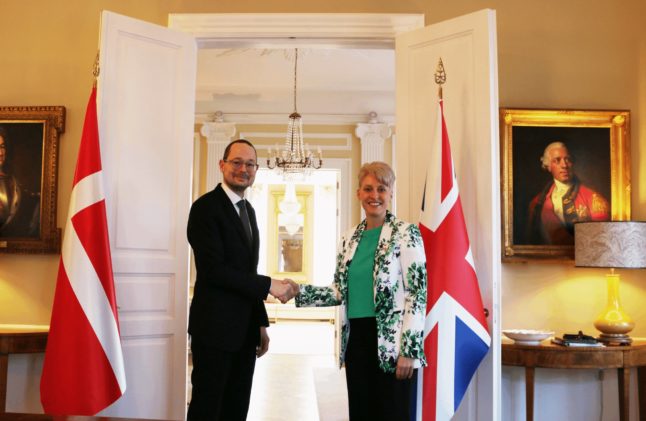The agreement will mean that all UK nationals who live in Denmark will be able to vote for candidates in Denmark’s local elections and run for office themselves.
Previously Denmark had imposed a four-year minimum residence requirement for UK nationals to be able to stand and to vote in municipal and regional elections. And those British citizens who registered as resident in Denmark before “Brexit Day” (January 31st, 2020) had also been able to vote in Danish local elections – unlike in most EU countries where Brexit immediately deprived all British residents of the right to vote in local elections.
This new agreement will remove the four-year-minimum and allow all British residents in Denmark to vote.
According to Statistics Denmark figures, this means some 5,388 British citizens who moved to Denmark in the last four years (up to the third quarter of 2023) will benefit from the new treaty.
READ ALSO: How many foreigners can vote in Denmark’s local elections?
It will also apply in reverse, protecting the rights of Danes in the UK to vote and participate in British local council elections.
Britain’s break-away from the EU left both groups without voting rights in their country of residence, whereas prior to Brexit all registered residents had the right to vote as well as to stand as candidates in local elections.
Britons resident in Denmark could also take part in Denmark’s EU elections, but this also lapsed when the UK left the EU.
The deal is a reciprocal agreement which will be treated as an international treaty that has to be ratified by the British parliament. In Denmark’s parliamentary system, this is done by executive order.
The treaty was signed on Thursday at the British Ambassador’s Residence in Copenhagen by the UK’s Ambassador to Denmark, Emma Hopkins and Nikolaj Stenfalk of the Danish Ministry of the Interior and Health.
In a joint statement, Hopkins and Denmark’s ambassador to the UK, René Dinesen, said the agreement will “enhance and protect the rights to participate in local democracy of approximately 50,000 citizens who reside in each other’s countries.”
“As an important outcome of the UK-Denmark Joint Statement signed by our Foreign Ministers last year, this treaty demonstrates the close ties between our countries and underlines our shared commitment to democracy,” they added.
In a statement posted by the Danish foreign ministry on social media X, Foreign Minister Lars Løkke Rasmussen said the deal securing Danes’ voting rights in the UK “pleases me on behalf of ourselves and democracy”.
Denmark is the fifth country to sign a voting rights treaty with the UK, following treaties signed with Spain, Portugal, Poland and Luxembourg.
Citizens of EU member states resident in the UK currently still have the right to vote in UK local elections, but this will change after May this year, when EU citizens who moved to the UK after January 1st 2021 will no longer be able to vote in the elections — apart from the five countries (now including Denmark) with which the UK has bilateral treaties.



 Please whitelist us to continue reading.
Please whitelist us to continue reading.
Member comments